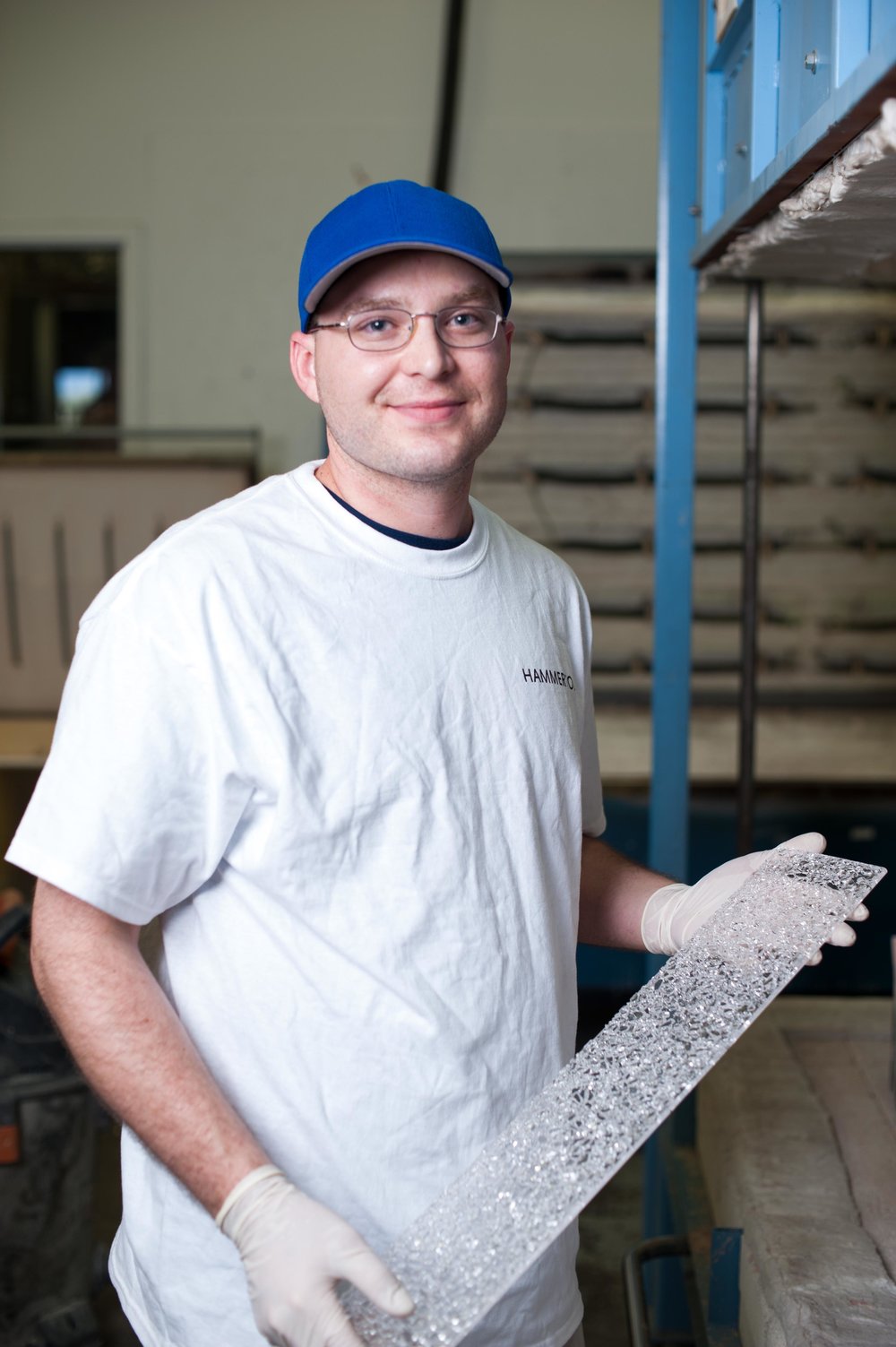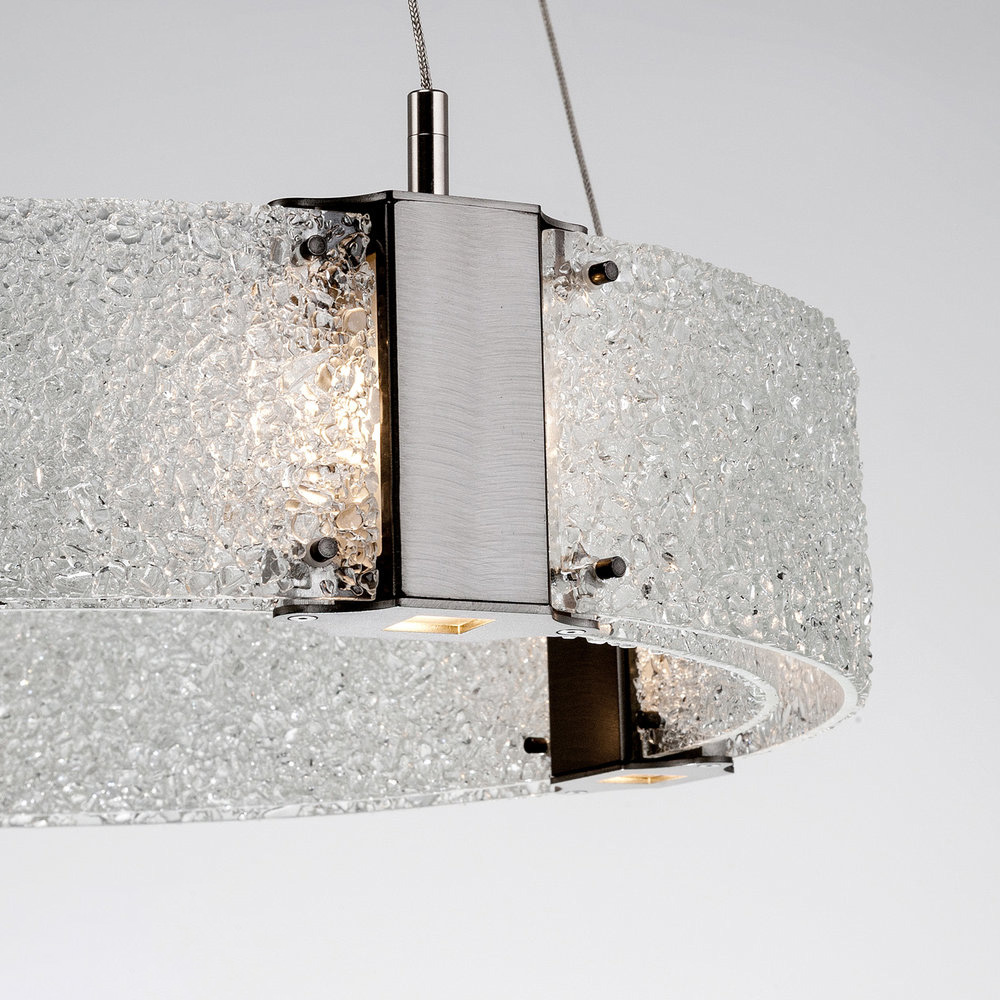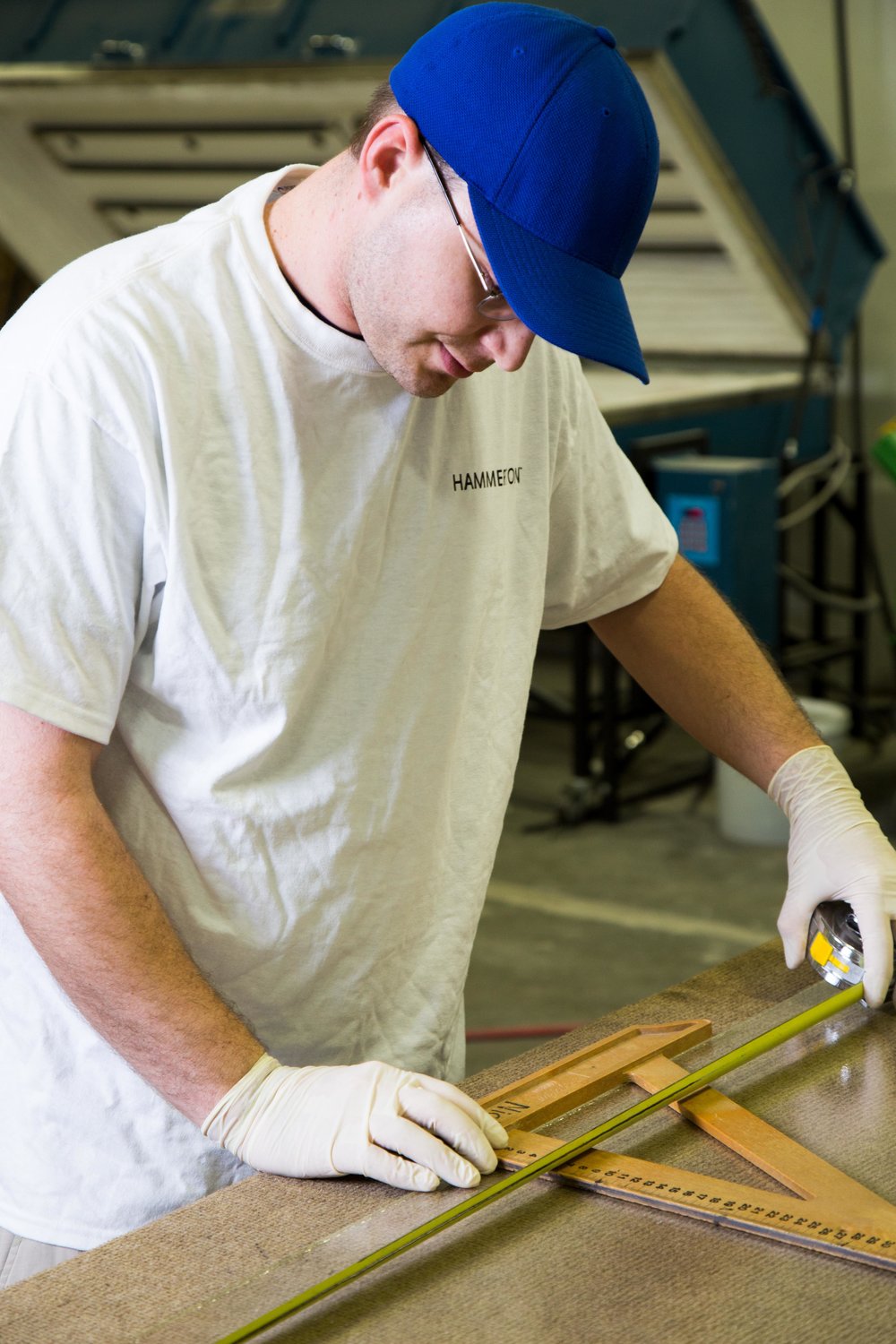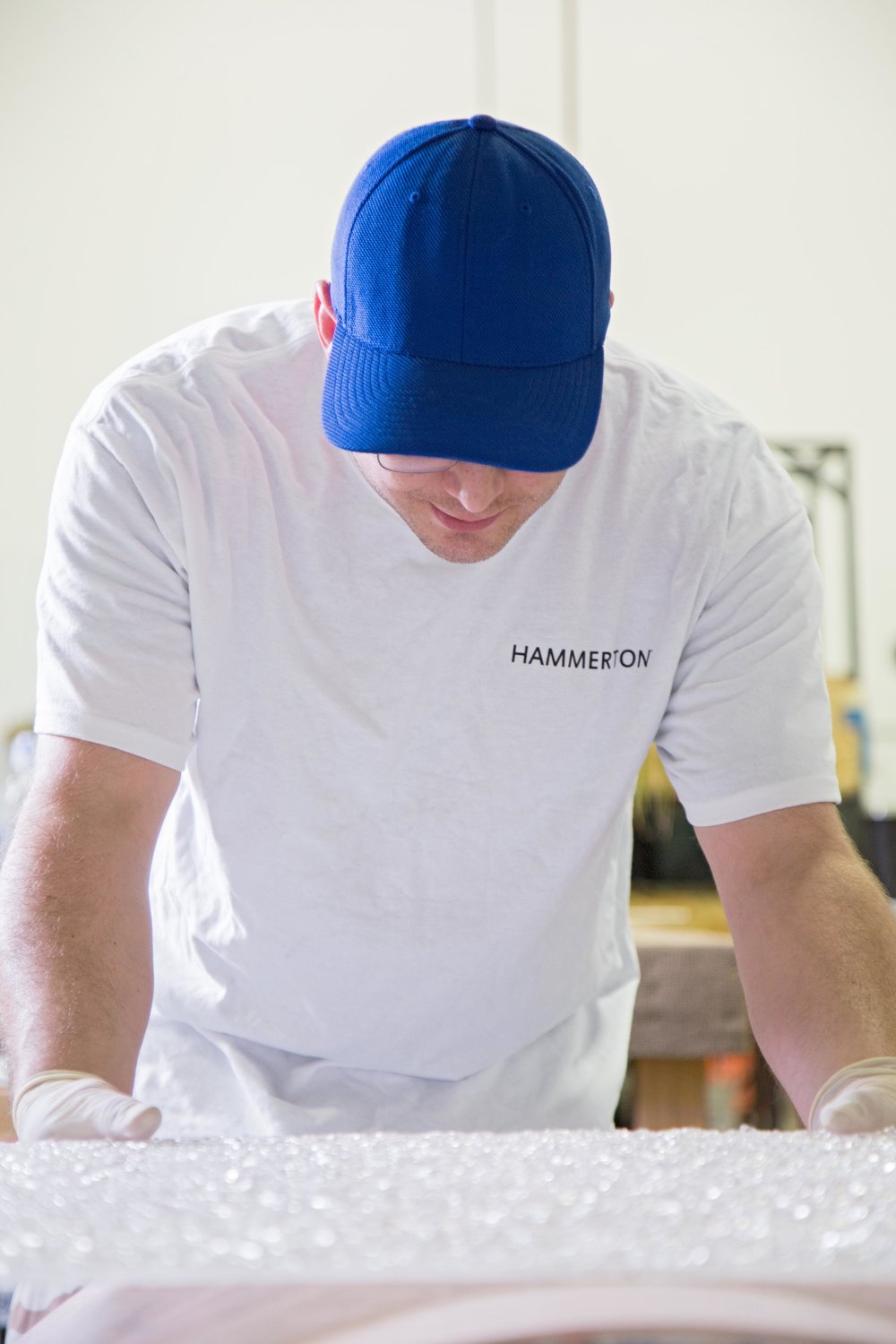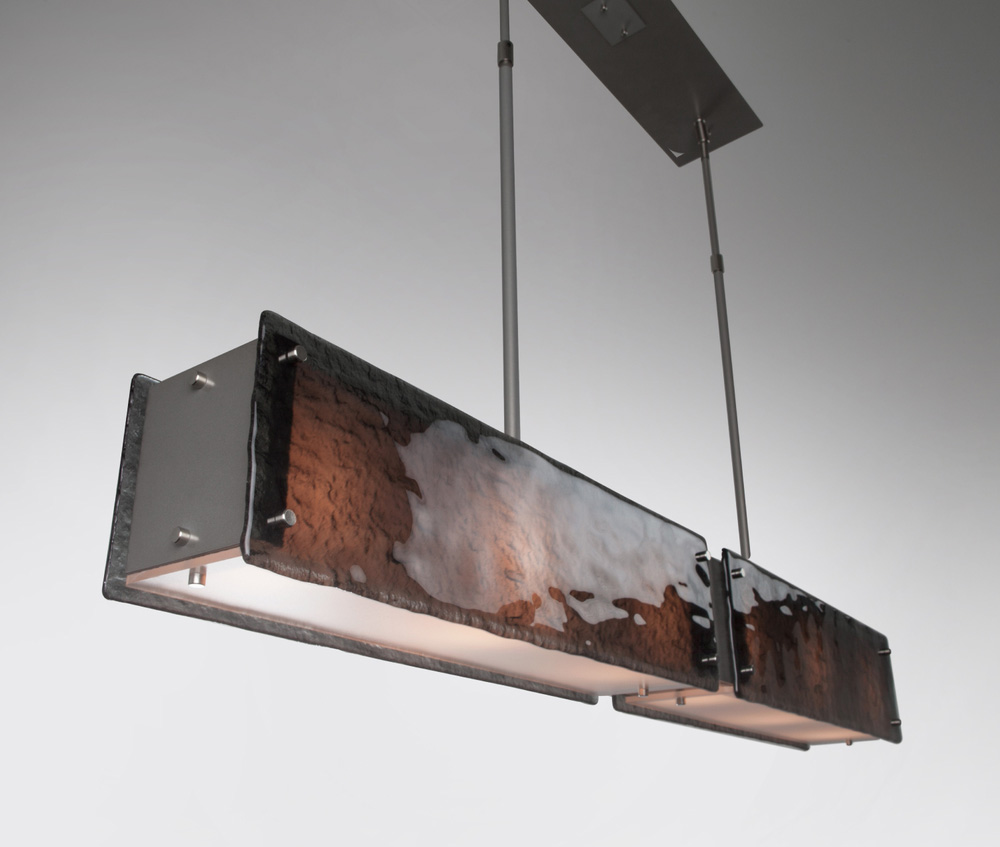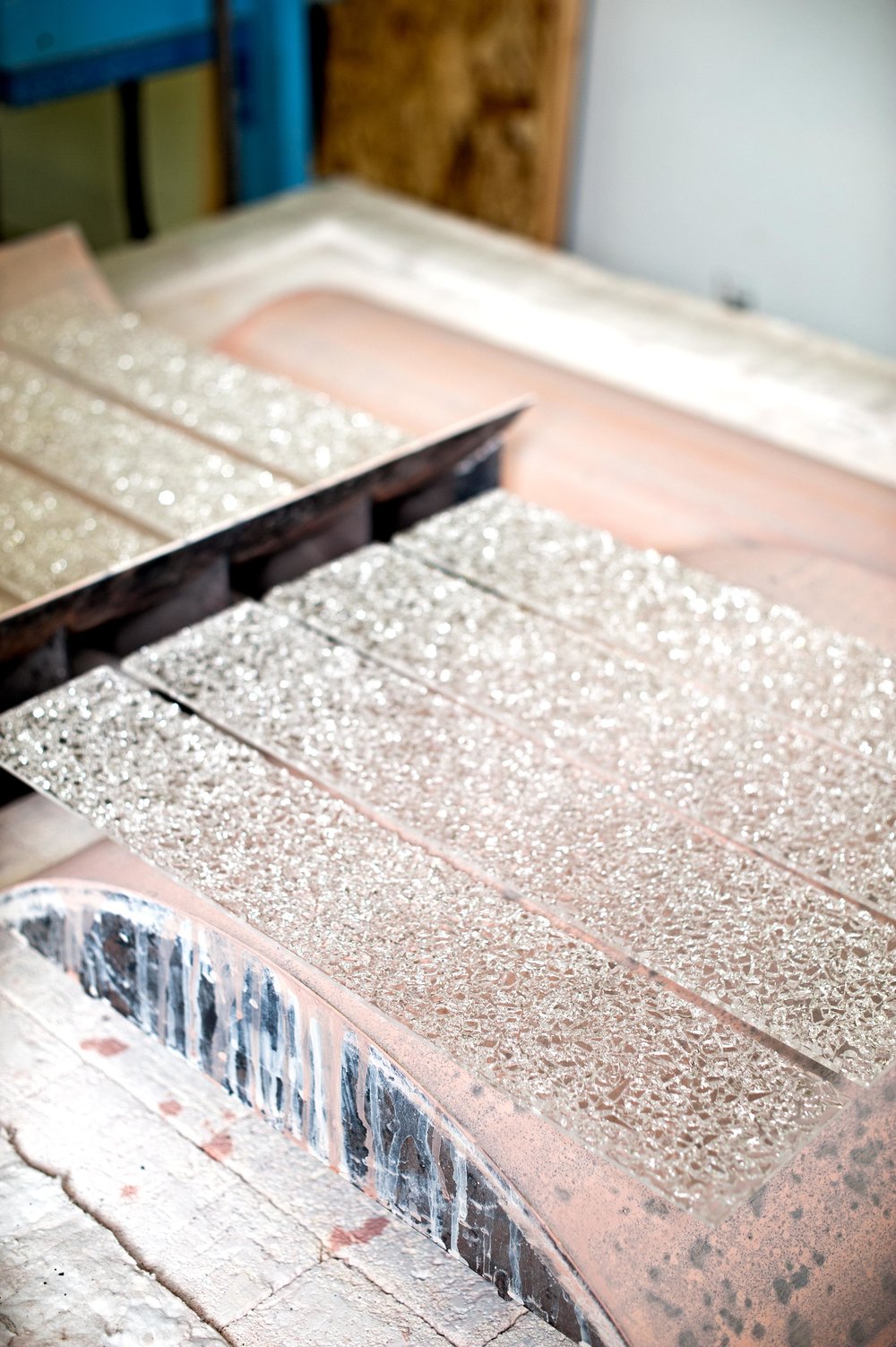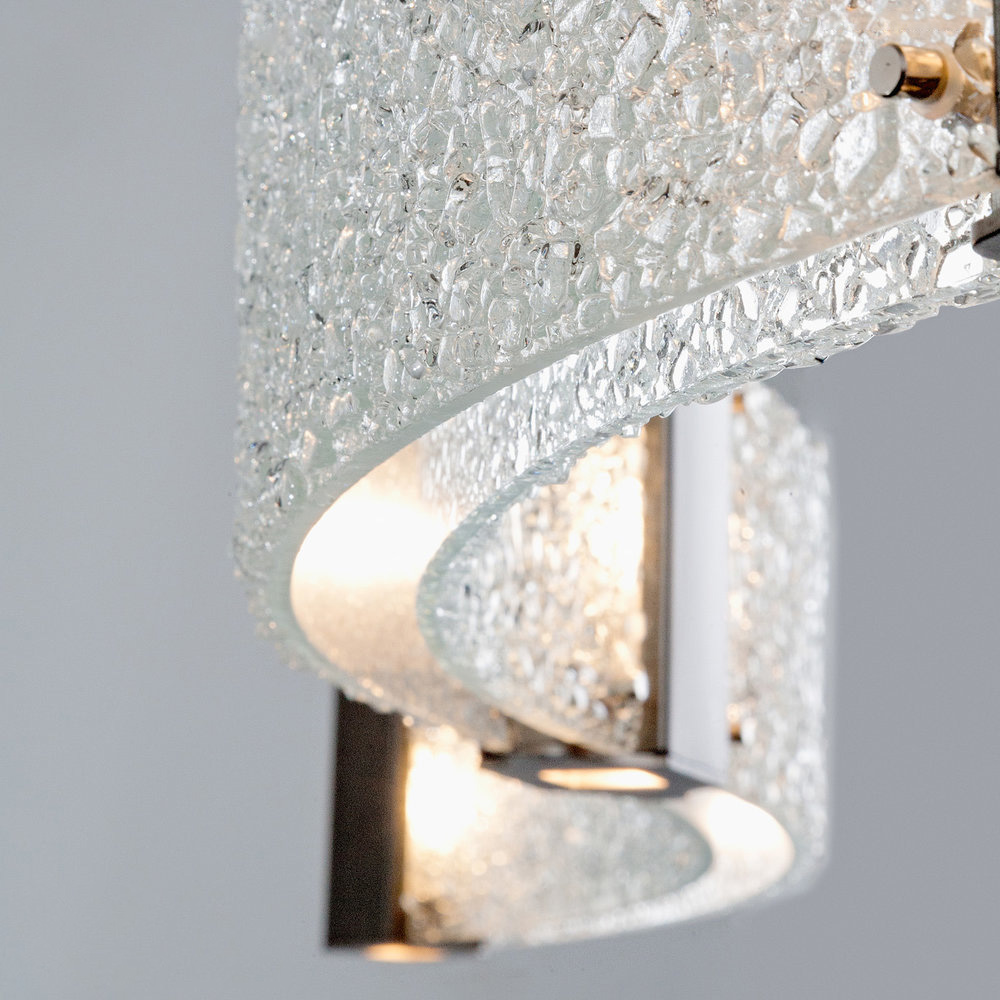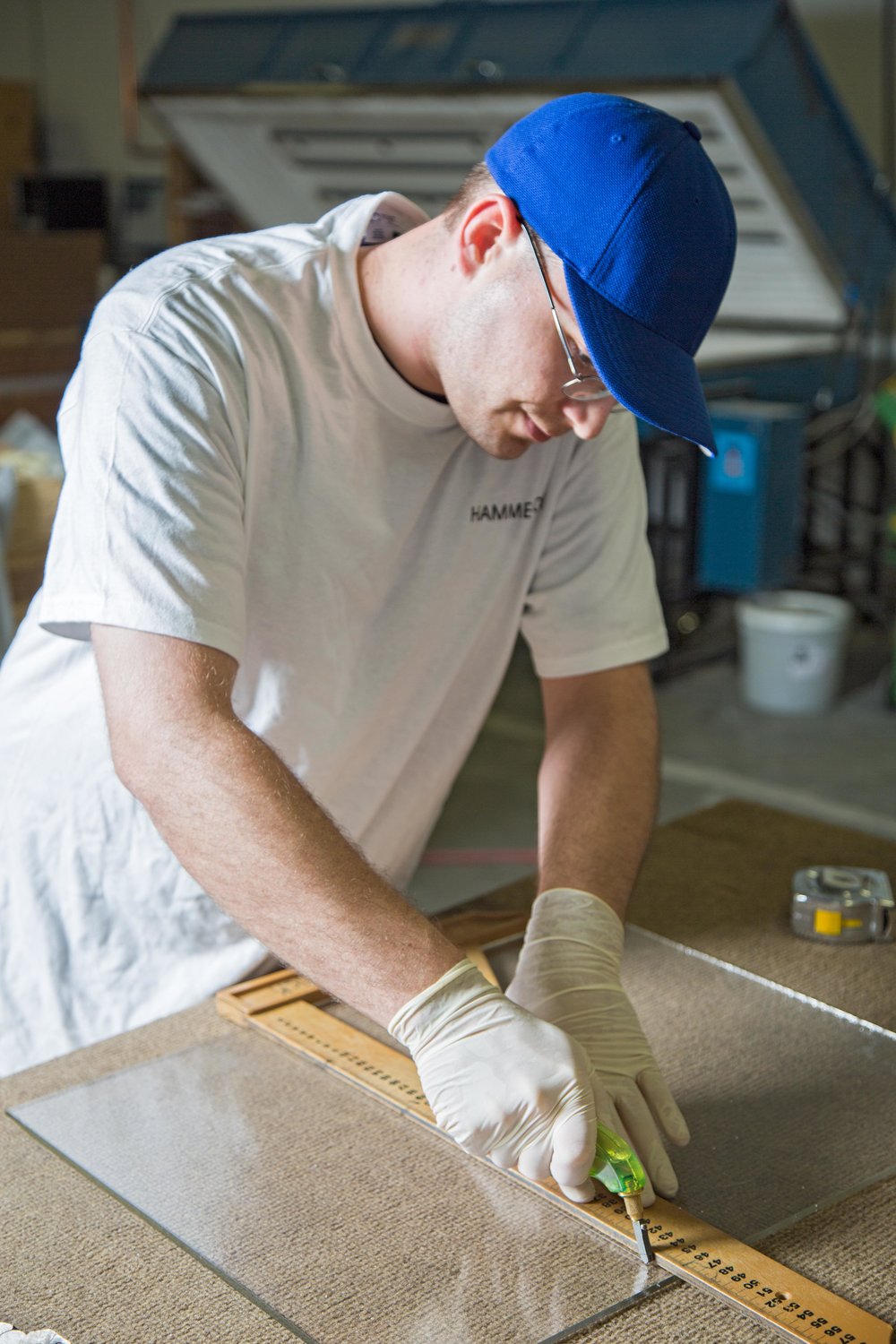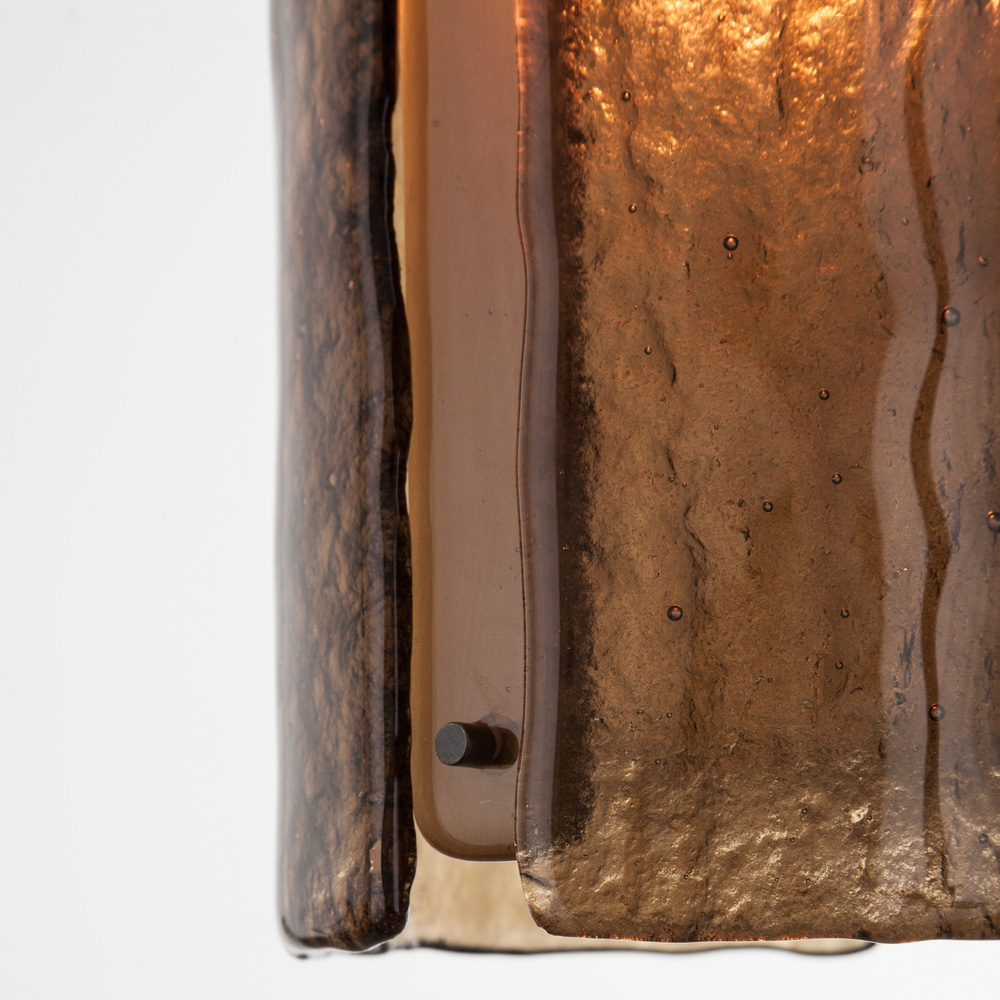ARTISAN SPOTLIGHT: NICK CONNER
From metal fabrication to shipping & receiving, Nick Conner has done it all throughout his ten years at Hammerton. But it was not until 5 years ago when he began working in the Hammerton glass shop that he found his calling. Today, Nick heads up our warm glass production team and is responsible for crafting the beautiful textured glass shades and diffusers featured in many Hammerton and Hammerton Studio fixtures.
The warm glass process involves heating glass in a kiln or oven to incorporate texture, shape, and visual interest, typically by fusing multiple pieces of glass together. The process is called “warm glass” because it requires temperatures below 2000 degrees Fahrenheit. By comparison, hot glass–which is better known as ‘blown glass’–involves temperatures well above that.
Nick has a deep understanding of the design versatility of warm glass. “Different fabrication methods allow you to achieve a wide range of interesting visual elements,” he explains. “For example, you can fuse different pieces of glass together to create texture or movement in a single panel, and you can slump glass into jigs or molds to achieve different shapes. Most of what we produce involves both fusing and slumping, which means each piece of glass goes through the kiln twice.”
Because glass expands and changes its composition at higher temperatures, preparing glass for kiln firing requires a high level of precision in order to achieve the desired aesthetic characteristics as well as the exact measurements specified by a given fixture design. Firing protocols are equally precise since each fabrication method requires a unique firing schedule incorporating varying amounts of time at six or more temperature levels. “Glass comes out of the kiln in a very different state than it goes in, so producing beautiful glass to precise dimensions is equal parts art and science,” adds Nick.
When glass comes out of the kiln, Nick and his team cold work, etch, drill and clean the finished material to prepare it for final assembly. And when the warm glass team packs up for the day, seven glass kilns continue to hum throughout the night, fusing and slumping glass for the next day’s work.
